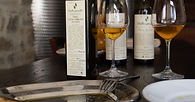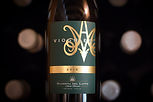
Central Italy
Umbria
Described as the green heart of Italy, this region is often overshadowed by its larger neighbour Tuscany but there is a lot to enjoy here, both historically and gastronomically. In the west is Lake Trasimeno, a huge expanse of water famous as the scene of the battle in 217 BC when Hannibal comprehensively defeated the Romans.
Overview
The capital, Perugia, home of Italian chocolate, holds a famous jazz festival in the middle of July each year and for the more spiritually minded the region is also home to Assisi – the birthplace of St Francis – where you can see the fabulous Giotto frescoes in the upper church. Equally interesting are the lower church frescoes which give a real idea of the inspiration of the English Pre-Raphaelite movement. In the cathedral of Orvieto you can see the Last Judgement by Luca Signorelli, a magnificent series of frescoes said to have inspired Michelangelo.
But in all this what is there for the wine connoisseur? Well, the answer is maybe not as much as in Tuscany but certainly some very interesting wines are made here. There are two DOCG areas in Umbria. The first is Torgiano just south of Perugia, an area whose viticultural history is inextricably linked with one man, Giorgio Lungarotti. Giorgio and his wife turned the family estate from typically mixed agriculture to a purely wine-orientated business and thus the Torgiano wine denomination was born. The Museo del Vino in the town is part of the inheritance Giogio has left and the cantina that bears the family name is run by his two daughters.
South of Assisi in the hills is the town of Montefalco, home of the other DOCG wine in Umbria. Sagrantino is the grape variety and with its thick skin it produces a wine rich in tannins. To allow these to mellow, 37 months must pass (of which at least 12 must be in barrel) before the wine is permitted to be sold.
Apart from these two notable wines, an honourable mention must also be made of the glorious white wines from around Orvieto. The town itself sits on a massive tufa outcrop and this soft rock has been excavated since Etruscan times. In the past, the caves provided ideal conditions for producing these wines, although temperature-controlled stainless steel vats have now taken over this role. For those looking out for the unusual you can also find wine here using muffa nobile or noble rot to produce a sweet deeply-satisfying dessert wine.


Wine: Vineyards & Wine Reviews
Vineyards
Wine Reviews

Food: Restaurants, Recipes & Articles
Restaurants
Recipes
Interesting Articles

Travel: Places to See
Places to see















